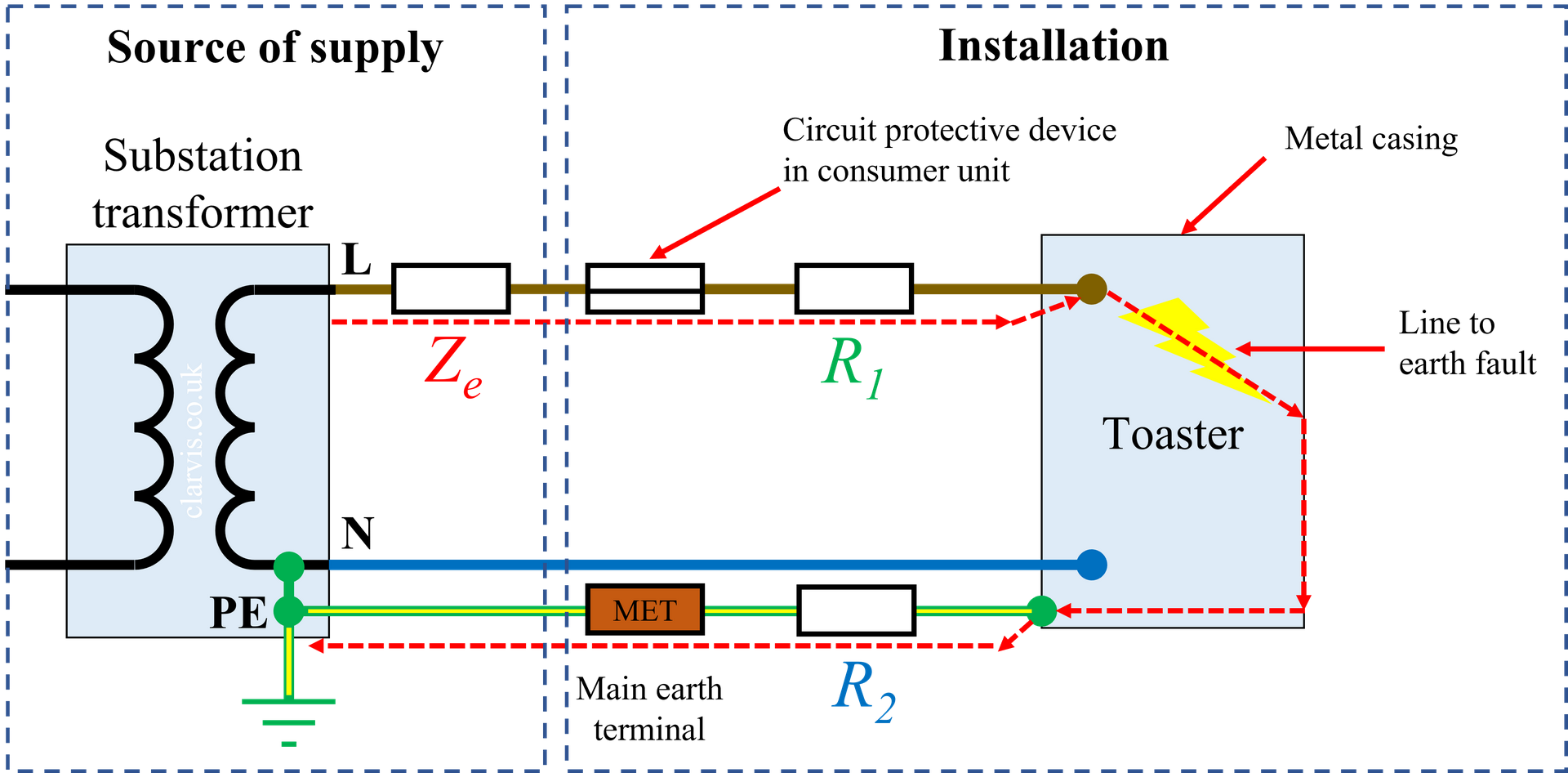When there is a fault, say a line comes into contact with a metalic surface, the protective device must disconnect the supply to that circuit. This is achieved by connecting all external and extraneous conductive parts to the protective earth via the main earth terminal..
If there is a fault in a toaster for example and a line conductor comes into contact with the metal casing. Current flows through the line from the supply to the consumer unit and through to the final circuit. This current then continues its path through the casing of the toaster, through the CPC and to the main earth terminal (MET) via the consumer unit.
All of the cables involved in the description above have some resistance. Because this is an ac circuit we use the word impedance instead of resistance. The sum of all of these impedances is called the Earth Fault Loop Impedance (Zs). The lower this value the higher the fault current and the quicker the protective device will disconnect.

The image here shows the earth fault loop path from the electricity substation to a faulty domestic toaster in a TN-S system. Ze is dependent on the DNO and out of your control, but R1 and R2 are dependent on the installation in the property.

| Zs | Earth fault loop impedance. The impedance of the whole fault path. |
| Ze | External impedance. The impedance of the fault path at the electricity supplier's side. |
| R1 | Resistance of the line conductor in the installation's circuit. |
| R2 | Resistance of the CPC in the installation's circuit. |
